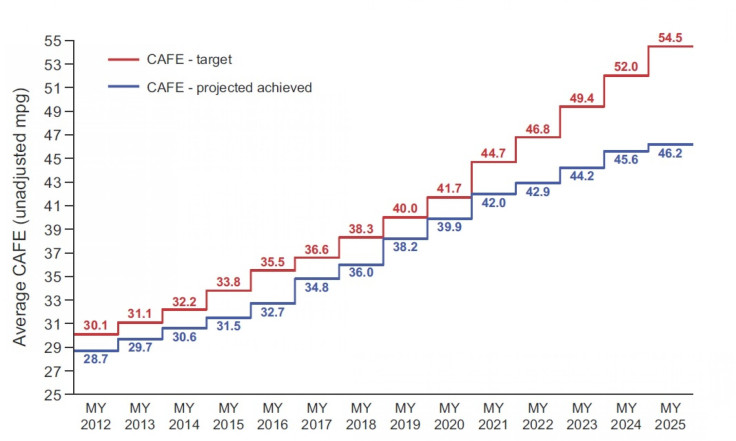Automakers Won’t Hit US New-Vehicle MPG Average Of 54.5 By 2025 Without Using Credits, But It Will Be 60% More Than It Was Last Year

New vehicle fuel economy has made considerable strides in recent years, thanks to growing consumer awareness and public policies that have forced automakers to innovate in a country that pays some of the world’s lowest prices for gasoline.
As automakers push to meet stricter standards they will also be facing increased scrutiny by government regulators that slapped Korean automakers Hyundai and Kia in November for misleading on mpg in 13 models.
Automotive News reporter Gabe Nelson recently sat down with Christopher Grundler, director of the Office of Transportation and Air Quality at the Environmental Protection Agency, to discuss the progress in improving fuel efficiency on vehicles plying U.S. roads. This is part of what Grundler said about the progress toward reaching a nominal average mpg of 54.5 by 2025.
What is striking to us is how well the industry is doing. They are beating the standards, and they are well ahead of schedule. Our estimate for the 2013 model year, when all the sales numbers come in, is that 27 percent of the new-car fleet will be in compliance with the 2016 greenhouse gas and fuel economy standards.
In other words, over one in four vehicles in the 2013 model year (defined as cars released between October 2012 and September 2013) sold in the U.S. have mileages over 35 per gallon, including hybrids, hybrid plug-ins and electric vehicles, when the targeted nominal average CAFE (Corporate Average Fuel Economy) standard for the current model year is just over 31 mpg.
Grundler cited three 2014 model examples that are ahead of the annual targets established by the National Highway Traffic Safety Administration (NHTSA). The Environmental Protection Agency (EPA) is responsible for measuring fuel efficiency to see if vehicles are complying. Recently regulators forced Ford Motor Co. (NYSE:F) to lower its fuel economy rating for the C-Max hybrid compact; the company had used testing of the Ford Fusion to extrapolate fuel economy for the C-Max and agreed to financially compensate customers.
As the EPA and non-governmental consumer watchdogs like Consumer Reports increase their scrutiny of fuel economy ratings, we can expect to see more automakers slapped for embellishing figures. But even if they stay on course, automakers can make up for missing actual miles-per-gallon targets by receiving credit for making other improvements.
According to a report released by from Michael Sivak and Brandon Schoettle from the University of Michigan Transportation Research Institute, the projected CAFE standard annual benchmarks and the so-called “projected achieved” miles per gallon (or mpg equivalents in the case of hybrids and electrics) are gradually drifting apart to the point that by 2025 the target of 54.5 miles per gallon will actually be 46.2 mpg if you exclude a number of credits automakers are receiving, or about 15 percent lower.
“It is likely that manufacturers will also use alternative credits not related to improvements in fuel economy to assist in reaching these goals,” said the report released last week.
These credits include:
- Ability of manufacturers to pay civil penalties rather than achieving required emissions standards;
- The ability to include the electrical operation of plug-in electric vehicles for compliance through 2020;
- The ability to transfer and carry-forward these credits when needed; and
- The inclusion on so-called “off-cycle technology” credits, such as improving air conditioning systems, in the calculation of mpg.
Nevertheless, even without the adjustments, the projected actual miles per gallon average improvement is expected to rise from 28.7 mpg in 2012 to 46.2 mpg in 2025, or about 60 percent more fuel efficient.
© Copyright IBTimes 2024. All rights reserved.






















